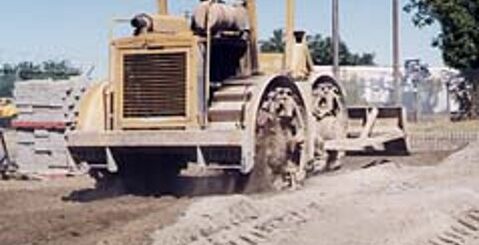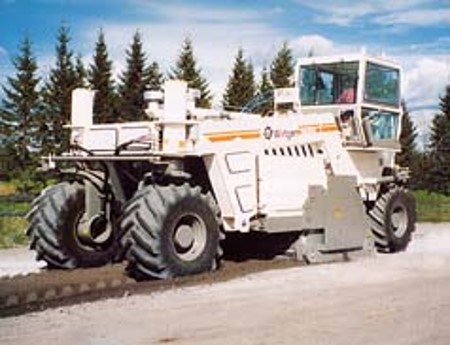What is Soil Stabilization? Types of soil stabilizations?
What is Soil Stabilization?
Improving the engineering properties of soils used for pavement base courses, sub base courses, and subgrades by using additives mixed into the soil to effect the desired improvement.
Why Soil Stabilization is needed?
- Reduce permeability and compressibility of the soil
- To increase the shear strength
- To enhance the bearing capacity of soil
- Most importantly to improve natural soils for the construction
- Used to make the area trafficable for emergency purposes.
Methods of Soil Stabilization?
- Mechanical Stabilization
- Cement Stabilization
- Lime Stabilization
- Bituminous Stabilization
- Chemical Stabilization
1. Mechanical Stabilization

- Mechanical Stabilization is the process of improving the properties of the soil by changing its gradation.
- Two or more types of natural soils are mixed to obtain a composite material which is superior to any of its components.
- Also known as granular stabilisation.
Factors affecting mechanical stability of the soil-
- Mechanical strength of aggregate
- Mineral Composition
- Gradation
- Plasticity Characteristics
- Compaction
Uses-
- Improve sub grades of low bearing capacity soil,
- Used in the construction of bases, sub-bases and surfacing of roads.
2. Cement Stabilization

Cement Stabilization is done by mixing pulverized soil and Portland cement with water and compacting the mix to attain a strong material.
Types of Cement Stabilization
- Normal Soil-Cement
- Plastic Soil-Cement
- Cement-Modified Soil
Factors affecting Cement Stabilization-
- Type of Soil
- Quantity of cement
- Quantity of water
- Mixing, Compaction, and Curing
- Admixtures
3. Lime Stabilization
- Lime stabilization is done by adding lime to the soil, lime reacts with the soil and there is an exchange of cations in the absorbed water layer and a decrease in the plasticity of the soil occurs.
- The resulting material is more friable than the original clay and is, therefore, more suitable as a subgrade.
- The quick lime is more effective as a stabilizer than the hydrated lime.
- The amount of lime required for stabilization varies between 2 to 10%.
- Lime stabilization is not effective for sandy soils.
4. Bituminous Stabilization

- Bituminous is a non-aqueous system of hydrocarbon that is soluble in carbon di-sulphide.
- Any inorganic soil which can be mixed with asphalt is suitable for bituminous stabilization. In cohesionless soils, asphalt binds the soil particles together and thus serves as a bonding or cementing agent.
The amount of bitumen required generally varies between 4 to 7%by weight.
Factors affecting bituminous stabilization-
- Type of soil
- Amount of asphalt
- Mixing
- Compaction
5. Chemical Stabilization
- In chemical stabilization, soils are stabilized by adding different chemicals.
- In chemical stabilization setting time and curing time can be controlled.
- Chemical stabilization is generally more expensive.
The following chemicals have been successfully used-
- Calcium Chloride
- Sodium Chloride
- Sodium Silicate
- Polymers
- Chrome Lignin
A brief idea about Stabilization by geo Textile and Fabrics
1. Geotextiles as separators
- Geotextiles are used as separators between two layers of soils having a large difference in particle sizes to prevent the migration of small-size particles into the voids of large-size particles.
- The main use as separators is in the construction of highways on clayey soil.
2. Geotextiles as Filter
- It is usual practice to provide a properly graded filter to prevent the movement of soil particles due to seepage forces.
- The filter is so designed that the particle size of the filter is small enough to hold the protected material in place.
3. Geotextiles as Drain
- Geotextiles are previous, they themselves function as a drain.
- They have a relatively higher water-carrying capacity as compared to that of the surrounding soil.
 |
 |
 |
 |
 |
 |
 |
 |
 |
 |
 |
 |




